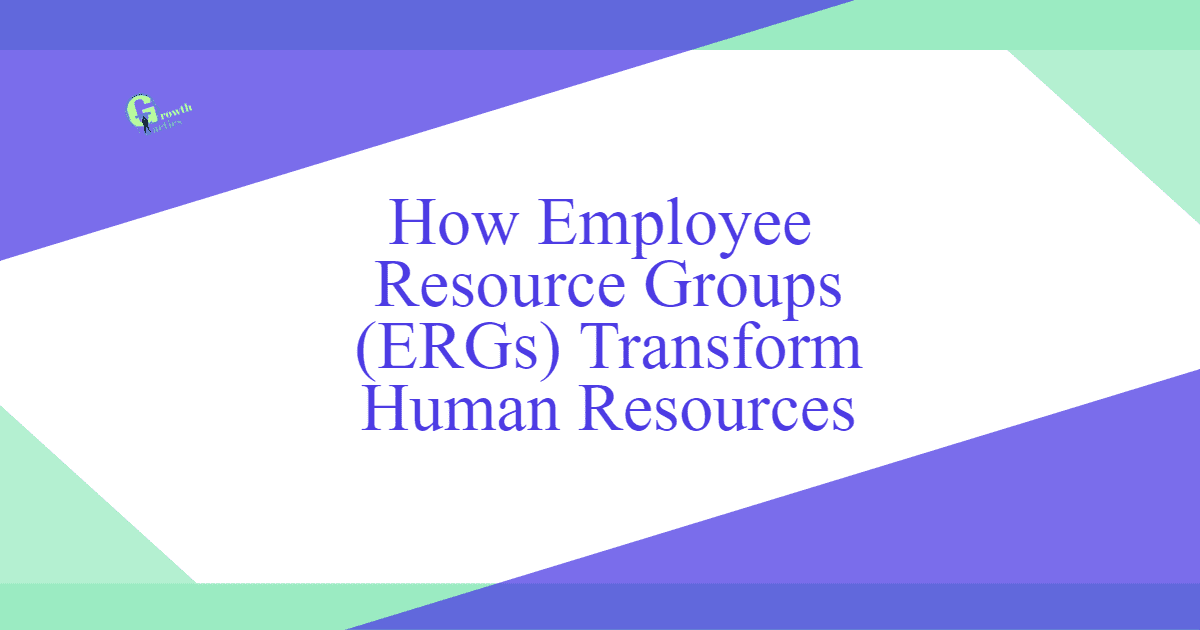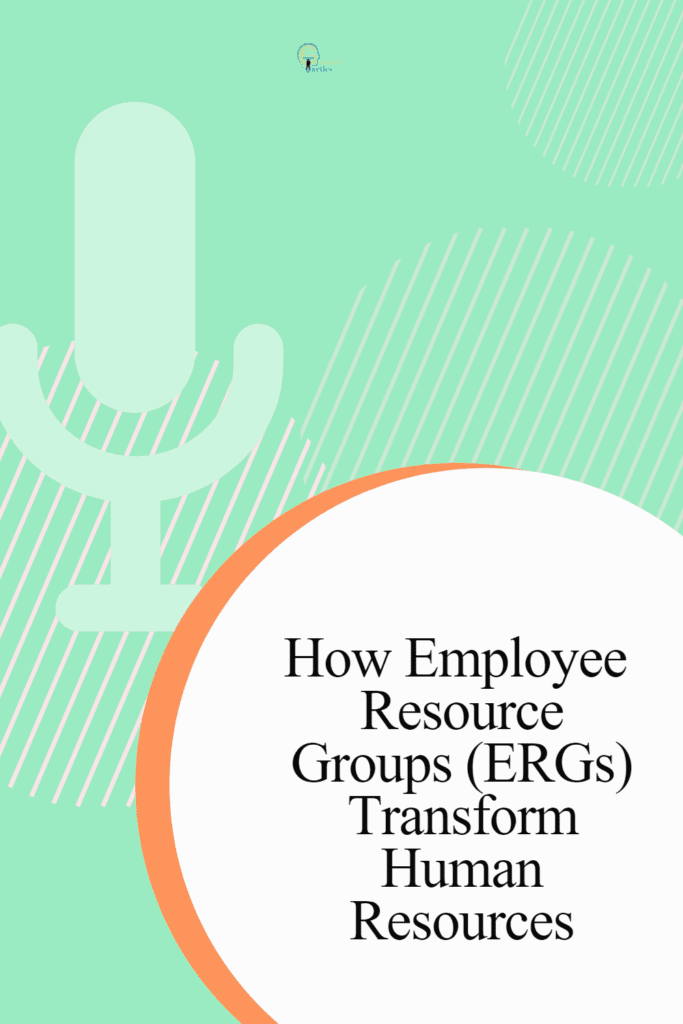Every organization’s strength lies in its people. But how do we create an inclusive environment that nurtures everyone’s potential equally? This article shines a spotlight on a powerful tool, Employee Resource Groups (ERGs). With insights on why successful ERGs are essential for your business, this article breaks down the importance of ERGs, and their impact on the employee experience, and offers guidance on how to cultivate effective ERGs.
Jump To Section
What is an ERG and Why Should Companies Have Them?
An Employee Resource Group (ERG), also known as an affinity group or network group, is an employee-led group within an organization. These groups of employees often focus on shared characteristics or life experiences, like women’s ERGs or LGBTQ ERGs, and contribute to creating an inclusive workplace. Many companies have ERGs because they foster a sense of belonging and community among ERG members and play a role in supporting organizational objectives.
How Do ERGs Enhance the Employees’ Experience?
ERGs can significantly enhance the employee experience in several ways. First and foremost, ERGs provide networking opportunities – giving ERG members an avenue to connect with their peers. Secondly, belonging to an ERG also offers professional development opportunities. By engaging in ERG activities, employees who share a common identity or interest can enhance their skills and broaden their knowledge within the company’s overall structure.
Why Do Employees Feel the Need for ERGs?
While ERGs are based on shared characteristics, they can also address the needs of underrepresented employees, providing support and fostering inclusivity. ERGs may serve as support groups, offering a safe space for underrepresented groups to voice concerns and get help. Also, ERGs give employees a sense of community and a sense of belonging within the workplace, helping them feel supported and respected.
What Makes an Effective Employee Resource Group?
An Employee Resource Group (ERG) is invaluable when effectively run. It can become a powerful force for change, fostering an inclusive culture, driving employee engagement, and contributing to business goals. But what are the ingredients that make an ERG truly effective? Let’s explore.
- Strong Leadership: Like any successful organization or team, an ERG requires strong leadership. Effective ERG leaders guide their groups in identifying and pursuing objectives that align with both the needs of the group and the strategic direction of the company. They have the ability to inspire, motivate, and bring the best out of their members.
- Clear Objectives: An effective ERG has clear and well-defined objectives. These objectives not only give direction to the ERG’s activities but also help to measure its success. The objectives should be aligned with the broader goals of the company to ensure that ERG’s activities contribute to the organization’s success. Examples of objectives can include increasing the representation of diverse employees within the company, improving the inclusion of underrepresented groups, or providing networking opportunities and professional development.
- Active Membership: An ERG can only be successful if it has an engaged and active membership base. This requires creating an environment where members feel their input is valued, their participation matters and their efforts contribute to the group’s objectives. Encouraging participation from all members fosters a sense of belonging and engagement, benefits the individual members, and strengthens the ERG.
- Company Support: An effective ERG has strong support from company leadership. This support can range from providing resources for the ERG’s activities to advocating for the ERG’s goals, to simply recognizing the importance of the ERG within the company culture. Clear support from company leadership not only helps legitimize the ERG, but it also indicates to members that the company values diversity and inclusivity.
- Diverse and Inclusive Practices: An effective ERG upholds inclusivity both within the group and throughout the organization. It embraces diverse perspectives, fosters an inclusive culture, and works to cultivate a supportive and welcoming environment for all employees.
- Impactful Initiatives: The value of an ERG is often based on the initiatives and programs it implements. An effective ERG successfully leverages its initiatives to adeptly address the needs and concerns of its members, promote diversity and inclusion, and contribute to the goals of the company. These initiatives can be as diverse as the members themselves, spanning professional development opportunities, networking events, awareness drives, and community outreach programs.
- Sustainable Model: Lastly, successful ERGs are built with sustainability in mind. This means creating a structure that can last beyond the tenure of current members – a structure that ensures continual leadership succession, a regular influx of new members, and consistent value delivery.
To recap, an effective ERG exhibits strong leadership, has clear objectives, nurtures an active membership base, enjoys firm company support, practices diversity, and inclusion, delivers impactful initiatives, and operates on a sustainable model. When these elements all align, an ERG becomes a powerful catalyst for change and a contributor to your company’s success.
The Role of ERGs in Fostering Inclusivity
Inclusivity is at the heart of every ERG. By creating an inclusive environment, ERGs allow members to feel recognized and affirmed, regardless of their sexual orientation or other identity markers. This supportive environment often leads to increased employee satisfaction and fosters a positive work environment that can benefit employees and the organization alike.
The Influence of ERGs in Human Resource Policies
ERGs can play a significant role in shaping human resources policies within an organization. By advocating for underrepresented groups, ERGs provide HR teams with invaluable insights into potential inequities in hiring, remuneration, and advancement, helping to create fair and balanced HR strategies.
How Do ERGs Help Employees Sharpen Their Skills?
ERGs play an invaluable role as a platform for professional growth and skill development. They offer diverse opportunities, both formal and informal, for members to improve their skill sets. This is largely done through a variety of ERG activities, including workshops, seminars, peer-to-peer mentoring sessions, and even access to leadership development programs.
One key area where ERGs contribute is by providing networking opportunities. These networks empower employees to connect with colleagues from different departments, roles, and even geographical spheres, which they wouldn’t have interacted with in their usual job roles. This diverse interaction can help employees expand their understanding of the organization, learn new ways of thinking, and improve collaboration skills.
Another area where ERGs exhibit a substantial impact is promoting leadership skills. Often, ERGs have their own organizational structure, mirroring a miniature version of the overall company’s structure. ERG members may choose to take up roles that provide leadership experience, pushing them to step out of their comfort zones and enabling them to develop critical strategic thinking and management competency.
An ERG also acts as a platform for members to engage in knowledge sharing and peer mentoring. Such avenues allow employees in ERGs to learn new processes, obtain insights from more experienced colleagues, and even share their own expertise. For instance, the women’s ERG at a company may conduct a series of learning sessions led by women leaders in the company. This fosters not only professional growth for the ERG members but also strengthens the diversity of thought within an organization.
Furthermore, ERGs often focus on causes that are important to their members. For instance, an ERG for black employees could focus on combating workplace bias or promoting racial justice. This not only helps an organization address societal issues but also creates a learning environment where employees can deepen their understanding of broader contexts and social dynamics. This enriches their perspective and facilitates personal growth.
Nurturing Diversity through ERG Activity
Diversity is a cornerstone of ERG activity. Through various programs and diversity training, ERGs help in spreading awareness about the diverse cultures present within the workforce. By doing so, they share diverse perspectives and promote a learning environment for all employees.
The Rise of ERGs in The Workplace
Over the years, ERGs have gained considerable traction in the workplace due to their ability to address the underrepresentation of certain groups and foster a sense of belonging. More and more companies are realizing that ERGs can help in promoting an inclusive workplace culture and accelerating change within the company.
ERG’s Contribution to Diversity Training
Diversity training is another area where ERGs have a profound impact. Through internal seminars, webinars, or by bringing in external experts, ERGs encourage a deeper understanding of diversity and inclusion issues among employees. This not only opens the door for better communication and collaboration but also contributes to the advancement of traditionally underrepresented employees.
Every business stands to gain immensely from harnessing the strength of its diverse workforce, and ERGs are a proven way to do so. A well-run ERG fosters inclusivity and builds a community that extends beyond the four walls of the office, contributing positively to employee satisfaction, performance, and company culture. Read on to delve into the land of effective Employee Resource Groups and their crucial role in shaping diversity, representation, and inclusion.


